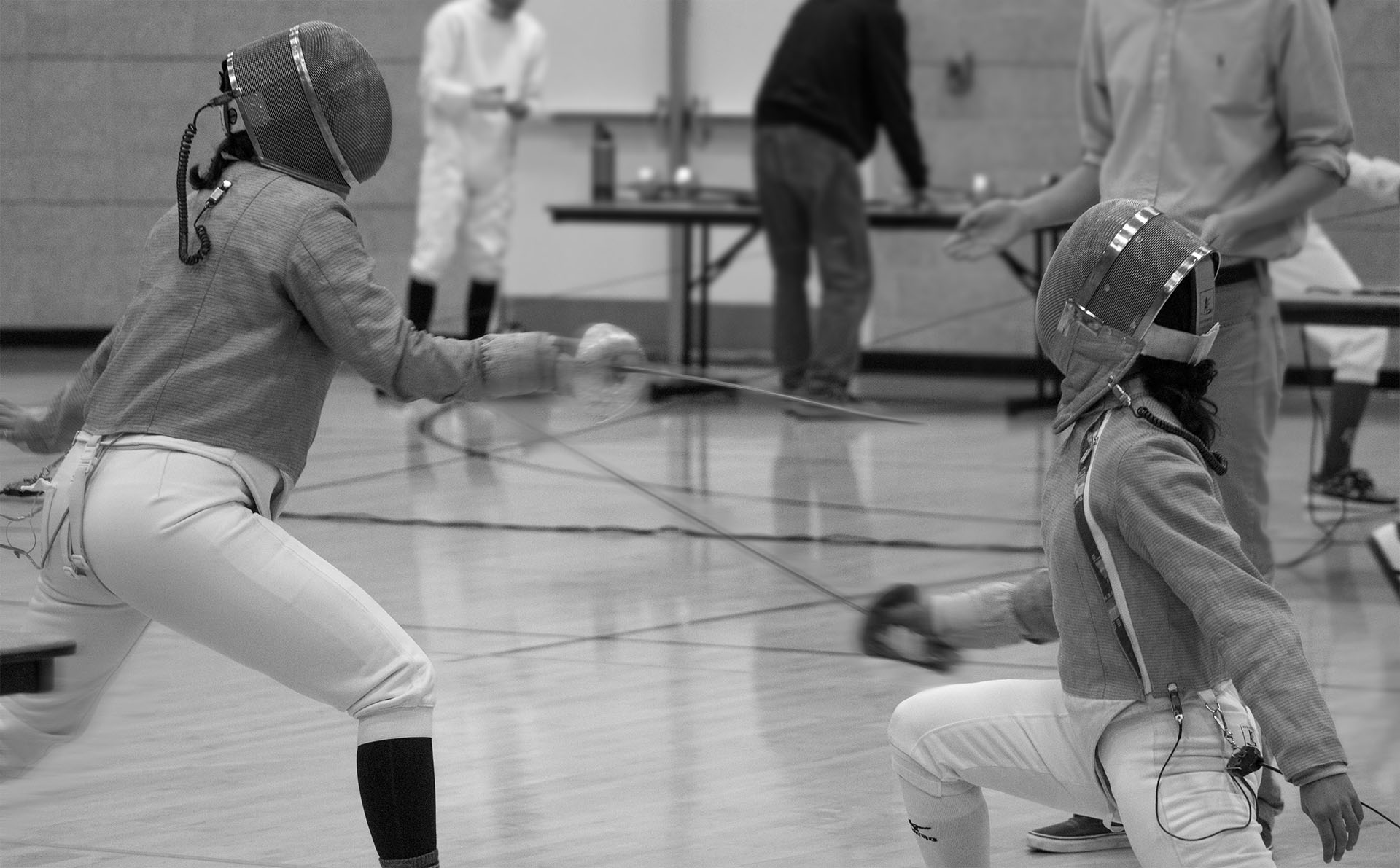Guide to Fencing Basics
There are three weapons in fencing that differ in size, appearance, scoring, rules, and technique. At Cal Poly, we teach all three! Check out Resources for some helpful links and the Fencing Tactical Wheel for a basic overview of the mechanics of a bout.
Foil

The first weapon we teach is foil. Target area is the entire torso, and foilists wear a metallic vest called a lamé so a touch can be registered when the tip of the opponent's weapon comes into contact with valid target area. However, foil employs right of way; consisting of a continuous attack within range with an extension of the arm. When two fencers hit simultaneously, priority is given to the one with right of way.
Saber

Another weapon we teach is saber. Like foilists, saberists must have right of way in order to get the point. However, their target area is the entire upper body, minus the hands. For both saberists and foilists, a defensive parry can be made to prevent the attacker's blade from hitting. The fencer can then take over right of way and make an immediate offensive action, or riposte.
Epee
The third weapon we teach is épée. Unlike foil and saber, épée does not use right of way. The target area for épée is the entire body, so leg and foot touches are valid as well, and an épéeist will not wear a lamé. In addition, if a simultaneous hit is made, both fencers are awarded a point.
